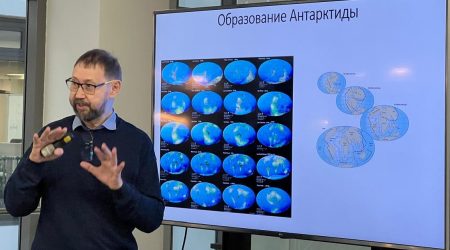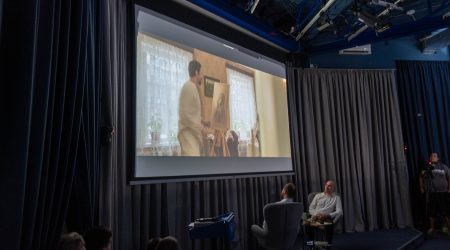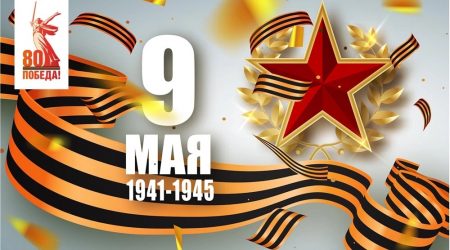Shtukenberg Geological Museum celebrating 220th anniversary




The first room of geological rarities, officially the Cabinet of Natural History, was founded with the University itself.
Museum Curator, Associate Professor of the Department of Paleontology and Stratigraphy Milyausha Urazaeva told about the history and collections of one of the richest natural science university museums in Russia with more than 430,000 storage items.
“In 1804, in accordance with the Charter of the Imperial Kazan University, an order was made to create a cabinet of natural history or, as it was called, Natural Cabinet at the Department of Physical and Mathematical Sciences, which laid the foundation for the geological museum of the university. Since the first exhibits appeared in it in 1805, it is this date that we consider the birth year of the museum,” she shared.
She noted that the zoological, paleontologic, mineral collections of the cabinet have an earlier origin and date back to 1733, when the Great Northern Expedition under the command of Captain-Commander Vitus Bering passed through Kazan.
“In Kazan, Tobolsk, Tomsk, Irkutsk, Yakutsk and other cities there were strongholds where materials and collections from the Arctic Ocean coast and polar tundra islands collected by the expedition members were delivered and then transported to St. Petersburg. Some of these finds settled in Kazan and laid the foundation for the collection, which was transferred to the Kazan Potyomkin Library. Many years later, 362 exhibits (ores, minerals, and mammoth tusks) were transferred to the Natural History Cabinet of Kazan University,” she continued.
Since 1999, the museum has been named after Alexander Shtukenberg, Professor of the Department of Geology and Paleontology of Kazan University, President of the Society of Naturalists at the Imperial Kazan University. In 1882, the scientist took part in the study of the Urals and adjacent territories of Perm and Orenburg provinces in order to compile a general geological map and geological description of European Russia, and in 1899 he was a member of the Ural expedition of Dmitry Mendeleev.
“The materials collected by Alexander Shtukenberg served as the basis for the creation of unique museum collections: the remains of post-Pliocene mammals of eastern Russia, Permian plants, meteorites, as well as collections on mineralogy and petrography of the Urals. Together with his students, Stukenberg compiled monographic collections of Late Paleozoic fauna. These collections were later added to the Geological Museum,” explained Dr Urazaeva.
She reminded that the museum’s funds contain many unique exhibits.
“The landmark of our museum is a mammoth skeleton, stored here since 1903. The bones of this ancient animal were found in Perm province and bought by Stukenberg. No less interesting is a collection of meteorites, one of the largest in the Volga Region. It counts more than 310 specimens. The beginning of this collection was laid at the end of the 19th century under Shtukenberg. Besides, various monographic collections of the museum are of special interest. Scientists from different parts of the world come to work with them,” she added.
The treasury of geological rarities constantly receives new exhibits.
“At different times the growth of the museum’s collections took place in different ways. In the 19th century exhibits were mainly purchased. For example, this is how Dr. Krantz’s collections appeared in the museum. At the brink of the 19th and 20th centuries Paleozoic sediments were studied on Samarskaya Luka, Timan Kryazh, along the coasts of the rivers – Volga, Kama, Northern Dvina, Don, Vyatka, Chusovaya, Belaya, and others. As a result of these expeditions, unique collections were gathered, including monographic paleontologic sets, which are still in demand and are constantly being re-studied. In recent years, the museum’s collections have been replenished thanks to the staff and students of the Institute of Geology and Petroleum Technologies; they bring interesting specimens from expeditions and student internships. For example, one of the latest additions to the museum’s collections is a sample of biotite brought by our undergraduates. The mineral was found in the Ilmen Reserve in the Southern Urals, where the students had had their internship.”
The museum is mostly used for educational purposes but is also open to external visitors with preliminary bookings. It also maintains a page on the Russian social network website, VK.
In addition, the storage items f the Geological Museum will be placed in the State Catalog of the Museum Fund of the Russian Federation, which is a digital archive with photos and brief descriptions of exhibits. Digitization at the museum is now at full steam.










